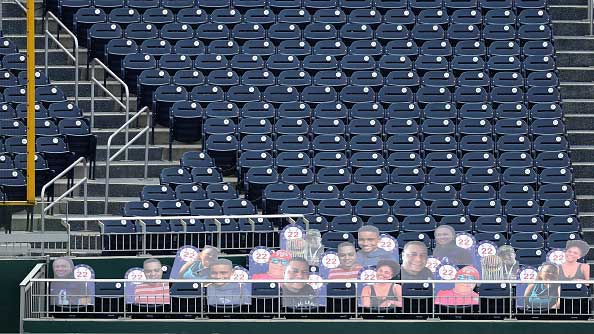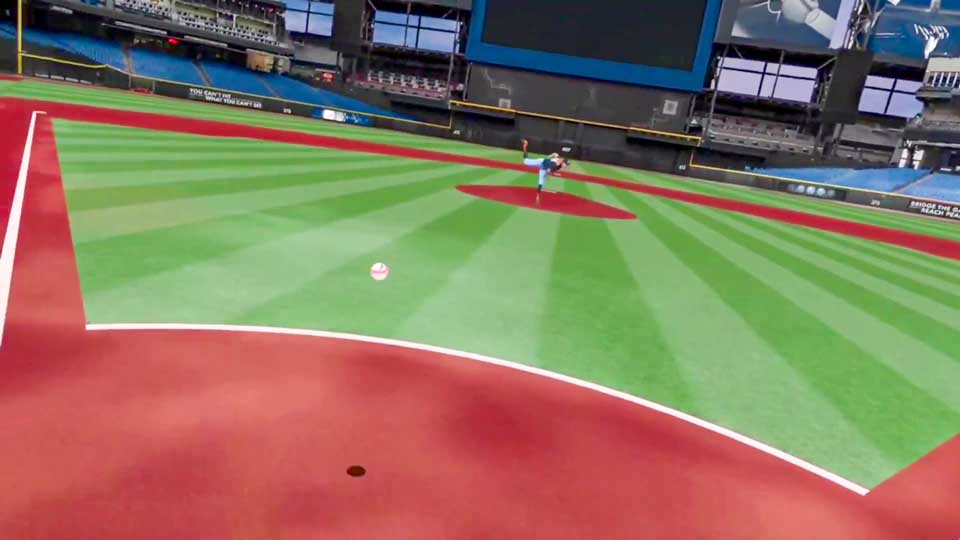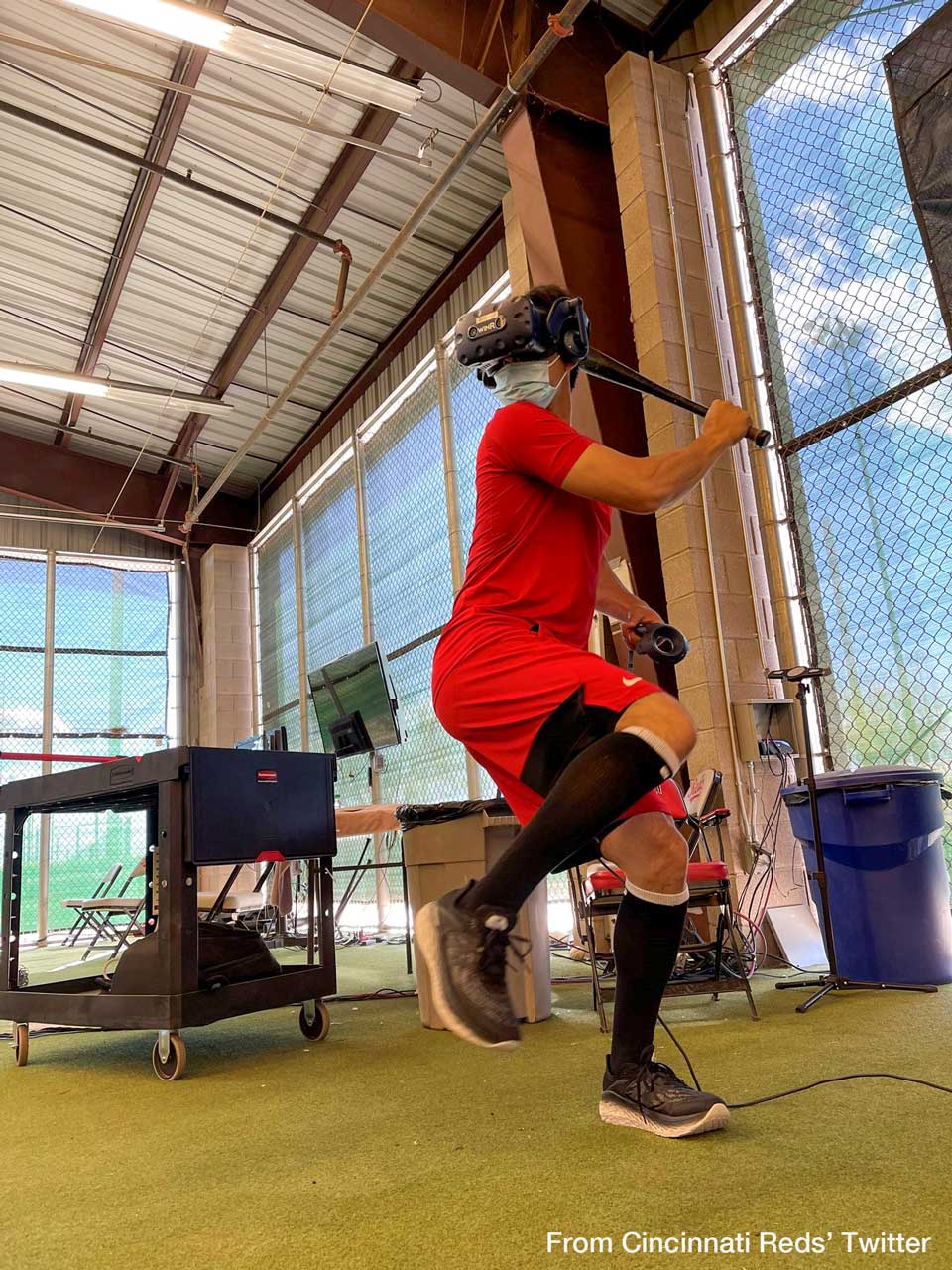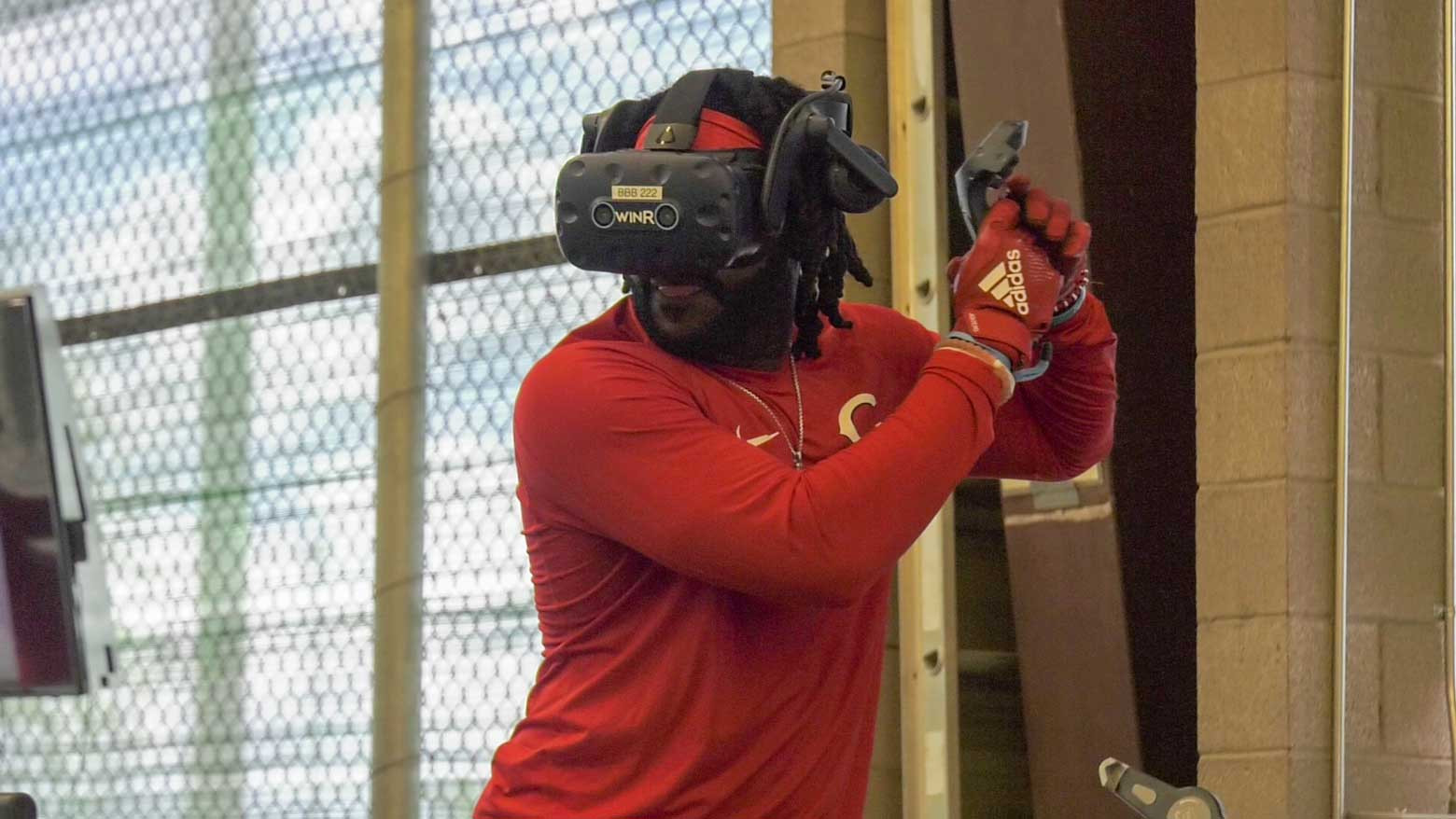On March 12, 2020, Major League Baseball (MLB) announced the cancellation of spring training games for the 2020 season. Just a day later, the league announced it was suspending spring training entirely. All of this came on the heels of other leagues — the National Basketball Association, the National Hockey League, and Major League Soccer — suspending their already in-progress seasons.
What resulted was a gap of over two months during which teams were not allowed back into their spring training facilities. Players had to figure out how to stay not just in physical shape, but also in "baseball" shape. It's not enough to be in top physical condition; having a muscular body alone does not necessarily help a player hit a 100-mph fastball, nor does it prepare them for how a ball travels off the bat when it's hit.
This was a time when batters could not face pitchers, pitchers could not face batters, and players could not even find partners to play catch with. In particular, batters — who face thousands of pitches from hundreds of pitchers every season — had to figure out a way to experience Major League hurlers, despite being physically unable to do so.

A virtual solution to a real problem
Enter WIN Reality, a maker of virtual reality (VR) software that allows a player to stand in the batter's box against any pitcher in the league from the comforts of his or her own home. Many popular players — including San Francisco Giants' Mike Yastrzemski and New York Yankees' Aaron Judge — used VR to train for the delayed 2020 season, which eventually started in late July.
The idea of using VR for baseball batters came from Dan O'Dowd, the father of WIN Reality CEO Chris O'Dowd. Throughout his illustrious 35-year career with various MLB front offices, Dan looked for a way to accelerate player development. Data showed that it took over 2,000 at-bats for an organization to predict the value of a hitter at the MLB level — the equivalent of three to four years. To shorten that timeframe, he turned to VR, eventually leading to the creation of WIN Reality.

Reality in virtual reality
Running on an Oculus Quest VR headset, WIN Reality allows batters to face a pitcher in a virtual, yet highly realistic, environment. It enables them to keep their eyes in midseason form, helping with pitch recognition and timing. Opening an onscreen menu, a batter can choose to face any pitcher and any of the pitches in their repertoire, from Boston Red Sox's Chris Sale to San Diego Padres' Yu Darvish to Los Angeles Dodgers' Clayton Kershaw.
"Over 95 percent of pitchers that have thrown in the big leagues are inside our VR application," Chris O'Dowd said. "So, as you're in spring training, preparing for opening day, these [batters] have potentially gone through all of the rosters, all the rotations for everyone in their division, anyone in the league to prepare for what they'll look like in a game."

What sets WIN Reality apart from other programs is its dedication to realism. It can recreate exact pitching forms and movements, which helps to prepare batters for when they face these pitchers during the regular season.
"That's our secret sauce," O'Dowd said with a smile. "At WIN Reality, we believe that from the beginning that if we're able to create a realistic simulation, that players would find value in it."
And that has certainly been the case.
A step forward during a stepback
The COVID-19 pandemic, which threw a curveball to the entire world, became an unexpected timely hit for VR training. Many players and teams were, in a sense, forced to implement it to help with offsite workouts and practice. In a world where human interaction was forbidden, this was the next best thing. And while there is no complete substitute for a real-life experience, WIN Reality has stepped up to the plate.
O'Dowd believes that the pandemic was the first time that players all across the sport could take a step back and tinker around with something new. Virtual reality, in some ways, was a blend of old school and new school, which helped even the veterans approach the technology with more open arms and incorporate it into their already solidified daily routines.

MLB teams have been using VR for some years now, but it has only started taking off more recently. Some progressive coaches, like Cincinnati Reds hitting coach Alan Zinter, have added it into their teams' spring training routine.
"What's really cool about it is that you get to face major league pitchers, their deliveries, their repertoire, their pitch movements," Zinter told the media this past spring. "There's a variety of games and stuff that you can do for pitch recognition, all kind of stuff, timing up the pitcher."
More than training
As the world — and, more specifically, the baseball world — recovers from the pandemic and crowds once again fill stadium seats, the league and its teams are finding more effective and efficient ways of training. There are already talks of keeping Zoom press conferences, as well as continuing some of the new rules that were implemented to keep the length of games to a minimum.
Teams are also using what they've learned throughout the pandemic to improve the way they train. VR has become one investment. Cincinnati Reds' outfielder Shogo Akiyama began the season on the injured list with a pulled hamstring. During his rehabilitation, the WIN Reality system allowed him to keep his skills sharp, despite not being able to physically be on the field to practice.
"Before, I only saw the [pitching] angle that you see in broadcasts," he told the Japanese media. "I can use this time while I'm injured to look at other pitchers and visualize the trajectory of the ball and my timing." He added that he plans to use VR more and more during the season, particularly for the starters and relievers he may face during a specific game.

What’s next?
The possibilities of virtual reality might seem infinite, and they may in fact turn out to be that way. However, WIN Reality is taking it one step at a time. O'Dowd is, for now, focusing on making the software more engaging for all ages.
"We really believe that if we deliver an excellent product for baseball and softball," he said, "that it's going to be a huge part of the game, and that that's going to drive more kids to want to play baseball want to play it longer, and then be fans when they're older." He is planning to add tournaments, real-time leaderboards, and customized training programs with up-to-date statistics to help young players not only get better at baseball, but also just genuinely have fun with it.
While he said that the current focus is only on baseball and softball, and that he doesn't intend to branch out to other sports, O'Dowd admits to receiving many requests from his own employees about adding a VR experience to the pitching side of the game. He envisions a system where a pitcher can try out a new grip or a new pitch, then test its effectiveness on hitters.
He also has his eyes set across the Pacific. WIN Reality has already made its way into the Korea Baseball Organization, a movement sparked by former MLB players who have joined the league. Now, as the program has grown, O'Dowd expects to have more traction with Japan. With Japan's huge market for VR and passion for baseball, one can only imagine that, after the home run WIN Reality has hit here in the US, Nippon Professional Baseball is up next in the batter's box.

